Which pest eats gooseberry leaves and what to do to save the bushes
Pests are one of the main causes of gooseberry death. Their appearance is difficult to prevent without the use of chemicals. Plants affected by insects quickly lose leaves and fruits. In addition, ticks, beetles, and caterpillars carry diseases, some of which cannot be treated.
If holes appeared on the leaves of the gooseberry or they just began to fall off, it means that pests have hit them. These can be caterpillars that gnaw fruits and leaves, or pests that suck sap from plants without damaging plant tissues. In both cases, photosynthesis is disrupted, the shrub becomes less hardy, loses its yield and dies. Someone is eating gooseberry leaves: how to recognize the cause and fight it - read on.
The content of the article
Who eats gooseberry leaves
Often, a gardener one day notices that gooseberry all the leaves are eaten. In this case, usually any symptoms do not precede the problem.
This problem occurs if the garden is attacked pests with a gnawing mouth apparatus. Not adult insects begin to eat the leaves, but their larvae. Butterflies usually lay them in large numbers several times per season.
Sawfly
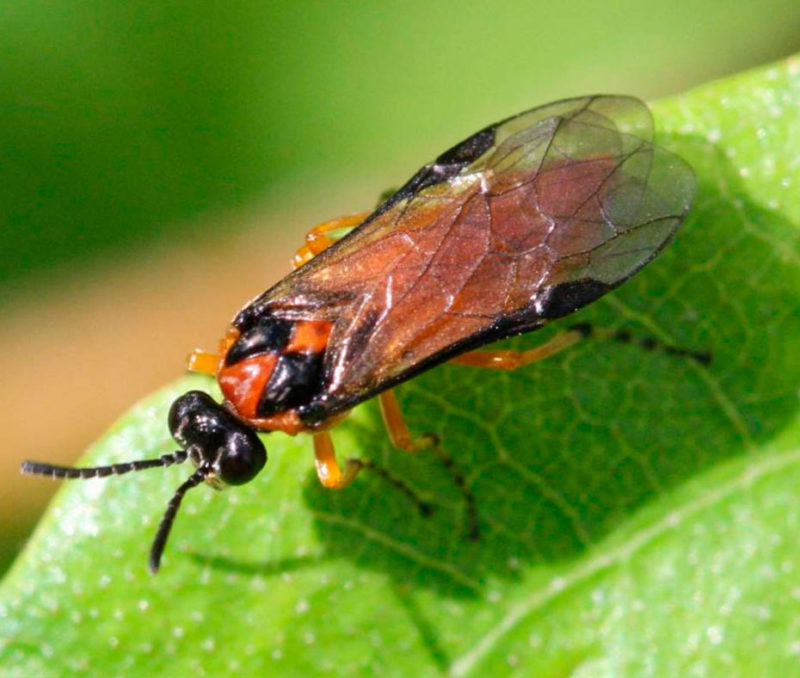
The sawfly is one of the most dangerous pests... There are more than 5 thousand varieties of it. Gooseberry usually infects the yellow gooseberry sawfly.
Note! Most gooseberry pests also affect red, black and white currants.
The sawfly is a flying insect with yellow legs, a black head, a striped abdomen, and transparent brownish wings. Outwardly, it looks like a wasp.
An adult insect does not damage plants. It lays eggs on the underside of the leaf plates. After 1-2 weeks, caterpillars hatch from the eggs. They have a light green translucent body with black dots, a black head and legs.
It is interesting! One female sawfly lays 70 to 150 eggs.
The pest gnaws holes in the leaves and buds. If there are a lot of caterpillars on gooseberries, they are able to eat all the greens in a few days, leaving only veins.
Well-fed caterpillars pupate and fall under the bush. After two weeks, adults hatch from them. The cycle is repeated. During the season, gooseberries can attack more than three generations of sawfly caterpillars.
Did someone eat all the leaves? To understand who it is, they carefully examine the foliage of the gooseberry, paying special attention to the inside of the plates. The green caterpillars in the shallow black dot are the sawfly. In the later stages of the defeat of the pest, it is determined by the leaves, of which only veins remain.
Moth

The gooseberry moth is a butterfly with yellow wings with orange stripes and black spots, a yellow belly with a black stripe. Caterpillars of the pest are light green with black hairs and dots on the back. They differ from the sawfly just by the presence of hairs on the body.
The pest hibernates in fallen leaves. In April, they emerge from their cocoons and lay eggs on the underside of the leaf plates. Caterpillars hatch from them, which eat young leaves and buds.
By the end of flowering, the caterpillars attach to the leaves with cobwebs and pupate. A month later, butterflies fly out of the pupae, and the cycle repeats. This time the caterpillars eat the soft part of the leaves, leaving only coarse veins.
Thus, 2-3 generations of caterpillars are replaced per year.It is possible to determine what exactly the moth hit the gooseberry by carefully examining the leaves and finding characteristic larvae or caterpillars in the web.
Elm leaf gnaw
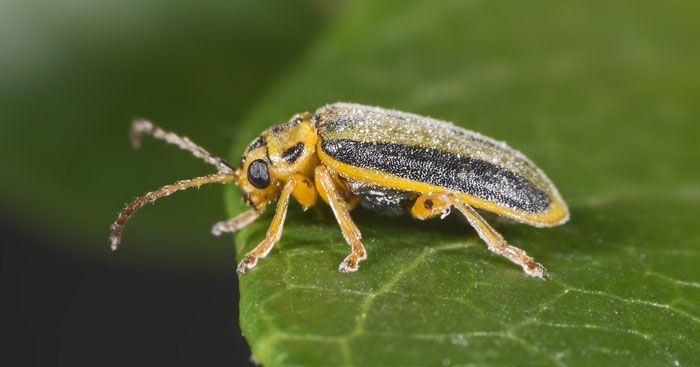
The elm leaf-gnaw is a shiny green-golden beetle. Its back shimmers in different colors in the sun. It has yellow legs and long antennae.
It is the adult insect that harms. It will gnaw holes in the leaf plates. The invasion of a large number of leaf gnawing leads to drying out of the leaves.
Kidney leafworm
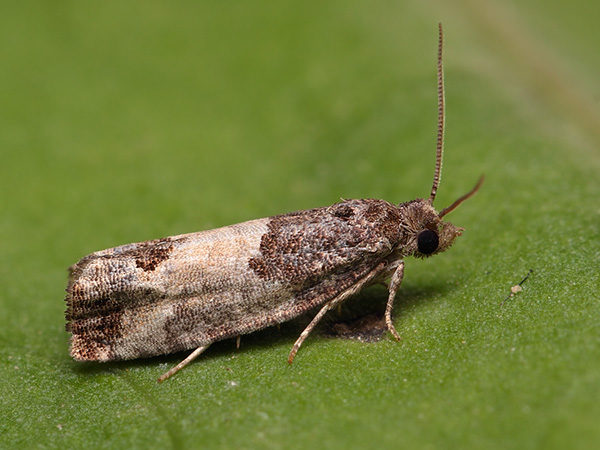
This is a butterfly, the front wings of which are gray with dark spots and a stripe in the center, and the hind wings are brown... Caterpillars are light brown with a black head and chest plate.
Note! The pest hibernates in cocoons in cracks in the bark and near the kidneys.
In spring, caterpillars feed on buds, then move to buds and leaves. In this case, the pest pulls the affected part of the plant with a cobweb into a dense lump.
Well-fed caterpillars pupate, and at the end of flowering, butterflies fly out of them. Massive damage to fruit trees and shrubs is observed in the second half of June.
The butterflies lay one egg on the outside of the leaf plates. The second generation caterpillars hatched from them have a yellow-green body, a black head and a shield.
The larvae, with the help of a cobweb, fasten together two leaves or a leaf with an ovary. The pest lives between the glued parts of the plant, feeding on both leaves and fruits at the same time.
Recognize the pest by twisted sheet plates entangled in cobwebs.
Gallica
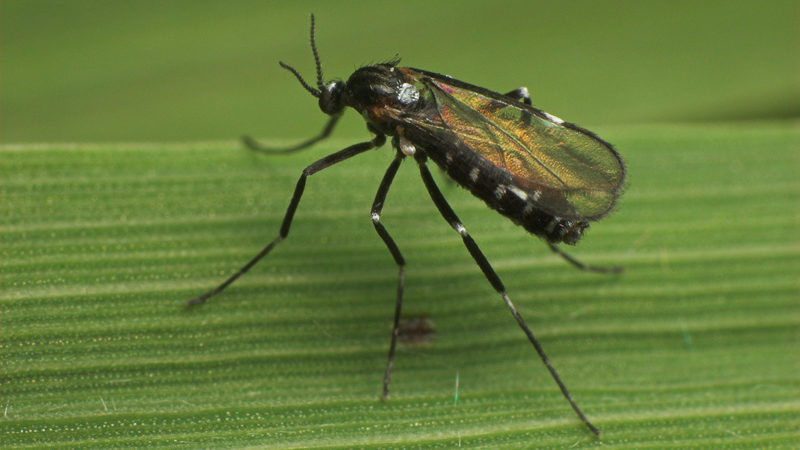
Currant gall midge are small mosquitoes only 3 mm long. The leaves are eaten by the leafy insect species. There is a shoot gall midge, the larvae of which gnaw holes in young branches.
At the beginning of gooseberry flowering, the pest lays eggs on young leaves, which are located at the tops of the shoots. Their eggs hatch into small white larvae. They feed on the sap of the leaf plates. Damaged leaves deform, shrink, dry out, and then fall off.
Pest detection is easy. It is enough to consider the seamy side of the sheet plate. It will contain a large number of white larvae.
Zlatka
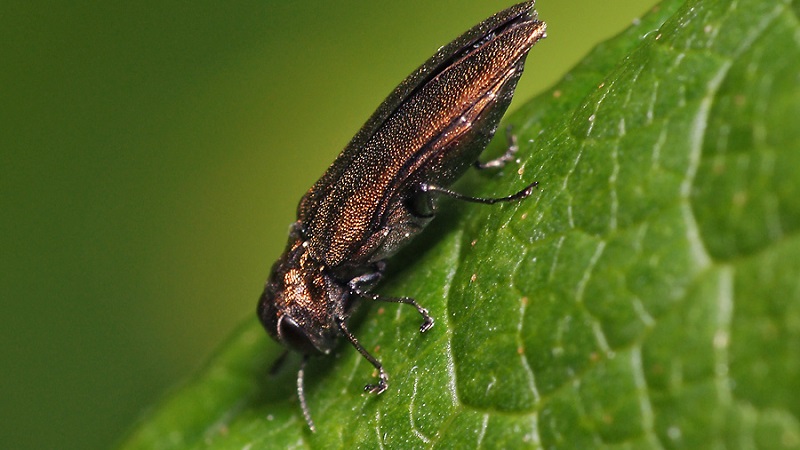
Currant goldfish are small oblong beetles of greenish-golden color. Their back shines in the sun and shimmers in different colors.
The pest lays eggs on young shoots and leaf stalks. Beetles cover the larvae with secretions, which harden when solidified. The larvae hatch after two weeks. They feed on plant tissue, which causes branches and leaves to fall off.
The pest is detected by the characteristic frozen shields on the bark and leaves. Also, the presence of passages in the bark and leaf petioles indicates the larvae.
Aphid
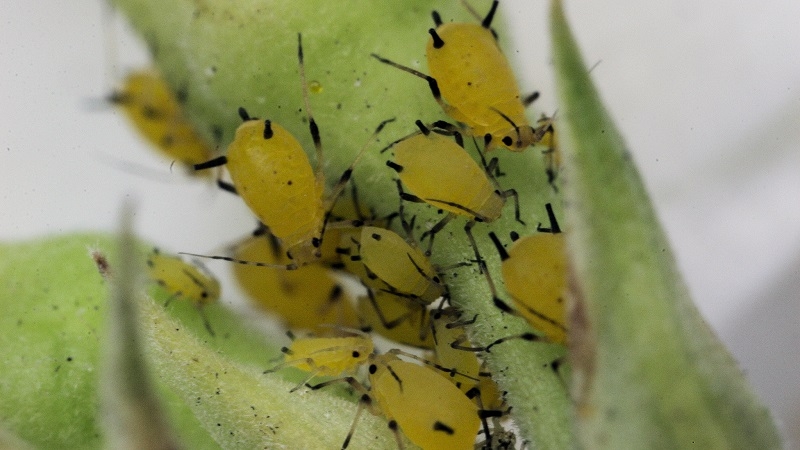
Aphids are small insects that settle in whole colonies on the leaves and young shoots of gooseberries. Depending on the species, the pest is green, black, brown or yellow.
Aphids also feed on gooseberry leaves, but not on hard tissues, but on their juice. The pest does no less harm than the voracious caterpillar, because the insect multiplies quickly and covers the entire plant. Dehydrated leaf plates wither, dry up and fall off.
Aphid females lay large numbers of eggs several times over the summer. With the help of wings, the pest spreads through the garden. At the same time, eggs, larvae and adults are found on the plant.
Note! There are viviparous species of aphids.
The first symptom of aphids is twisted sluggish leaves and drying tops of the shoots. To make sure the pest is present, check the underside of the leaves and examine the shoots. Aphid colonies are visible to the naked eye.
Spider mite
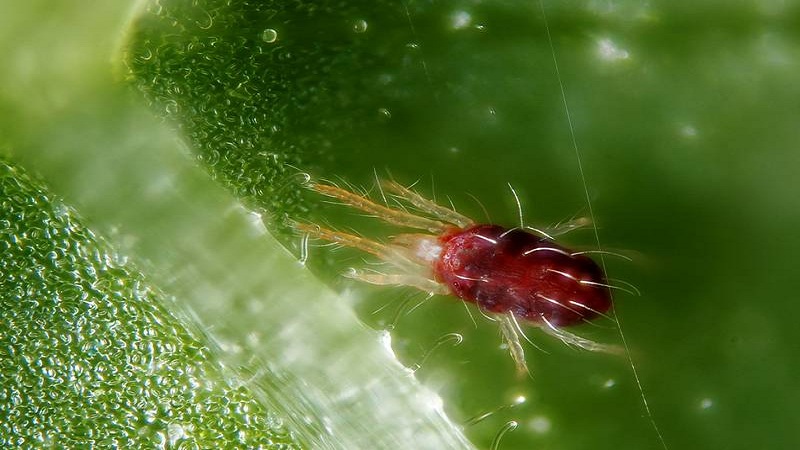
Spider mite is another pest that feeds not on the solid component of the leaf, but on its juice. Dehydrated leaf plates roll up, dry out and fall off.
The spider mite is a small yellow, black, brown or red insect.The main feature of the pest is that it entangles the affected parts of the plant (usually the lower part of the leaf plate) with cobwebs. It is by the cobweb and small insects that the pest is determined.
What to do and how to fight
It is important to deal with caterpillars and other pests in a timely manner. Otherwise, due to serious damage to the gooseberry leaves, photosynthesis will be disrupted. This will lead to a decrease in frost resistance and immunity of the plant. In this case, the shrub will not survive the winter.
Leaves are eaten - what to do? It is difficult to give a definite answer to this question. Pest control is possible by different methods. They are often used in a complex manner.
Mechanical removal
By itself, mechanical removal of insects is ineffective. This method allows you to temporarily stop the destruction of gooseberry greens and reduce the number of pests. It is recommended to apply it before processing plants.
There are several ways to manually remove pests:
- A white cloth or film is laid under the bush. The gooseberries are shaken, throwing off caterpillars and beetles. Pests that have fallen on the litter are collected and destroyed.
- Caterpillars are collected by hand from the leaves of the bush, paying special attention to the underside of the plates. Aphids, gall midges and spider mites are wiped off with a damp cloth.
- Pests are washed off the gooseberry with a hose. Dig up the soil around the plant.
Folk remedies
If not all the leaves have disappeared yet, it makes sense to turn to folk remedies. This method of fighting insects is effective and at the same time harmless, because the compositions are easily washed off with water, safe for people, animals and the environment. They are used even during the flowering and fruiting of gooseberries.
How to process gooseberries if caterpillar leaves are eaten:
- Ash and soap solution. 3 kg of ash are dissolved in 10 liters of water. The composition is insisted for three days, stirring regularly. Filter the product and dissolve a piece of grated laundry soap in it.
- Solanaceous tops. A kilogram of potato, tomato or pepper tops is boiled in 3 liters of water over low heat for an hour. The broth is allowed to brew for 6 hours, then filtered and diluted with 7 liters of water.
- Decoction of bitter herbs. Wormwood, yarrow, or dandelion fill a third of the pot. The rest of the volume is filled with water. The herb is boiled for an hour. Then let it brew for 4 hours and dilute with an equal part of water.
- Mustard-soap infusion. 1 kg of mustard is poured into a bucket of water. The mixture is infused for two days. Then a piece of grated laundry soap is dissolved in it.
- Ash powder. Gooseberry leaves are sprayed with a solution prepared from 10 liters of water and 50 g of liquid soap. Then dust it with ash.
- Infusion of tobacco. Take 1 kg of tobacco dust on a bucket of water. The tool is insisted for a week, stirring regularly.
The described preparations are used for spraying gooseberries. They process not only the upper part of the bush, but also the space under it.
Folk remedies are used until the problem disappears, but at least three times. The intervals between treatments are 5-7 days.
Attention!Homemade preparations are washed off with water, therefore, after precipitation, the treatment is repeated.
Chemicals
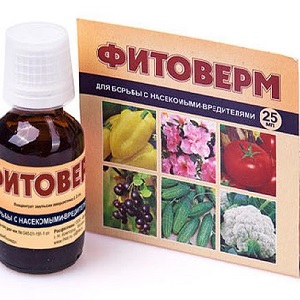
Chemical treatments make insect control quick and effective. Insect killers are called insecticides. They are poisonous not only to insects, but also to humans and the atmosphere, so it is recommended to use them as a last resort, before or after flowering.
Insecticides work in different ways. There are drugs that:
- penetrate the cells of the leaf, making it toxic to insects;
- get directly on insects, eating away their bodies or leading to paralysis.
It is not recommended to use insecticides when there are berries on the bushes. Otherwise, the crop will become poisonous.
There are a large number of pest control products on the market, for example:
- "Decis";
- "Spark";
- Kinmix;
- "Fufanon";
- Actellik.
Chemical treatment is carried out 2-3 times with an interval of 2-3 weeks. It is safest to do this before the plant blooms or after harvesting.
Important! The products are not washed off with water. Therefore, it is not necessary to use them every time after precipitation. The main thing is to process the gooseberries no later than a day before the expected rain.
Prevention
Pest attacks do not pass without leaving a trace for gooseberries. Even with timely treatment, the yield, endurance and frost resistance of the plant decrease. Therefore, it is important to prevent plant damage in advance.
What they do to avoid pest infestation on gooseberries:
- In the fall, fallen leaves, old branches and other plant debris must be removed from the site. After that, the soil around the plant is loosened and mulched.
- Sanitary pruning is equally important. All damaged, dry and diseased branches are removed every year. Indeed, it is in the damaged bark that many pests winter.
- In the spring, after the soil has thawed, the soil is loosened and mulched.
- In early spring, a gooseberry bush with unopened buds is watered with boiling water. This will help eliminate all pests.
- It is recommended to treat the gooseberry with insecticides before flowering. It is advisable to do this with all fruit and berry plants in the garden.
- During an outbreak of pests (most insects are especially active in May, the second half of June and July), folk remedies are treated, for example, the leaves are sprayed with a decoction of bitter herbs.
It is interesting:
Pests and diseases of honeysuckle: signs of damage and methods of dealing with them
Lemon pests and diseases: treatment and prevention at home
Diseases and pests of currants, ways to combat them, preventive measures
Conclusion
There are many varieties of pests that feed on gooseberry greens. Some of them gnaw holes in the leaves, while others drink the juice. Both options threaten shrubs with a violation of photosynthesis, a decrease in immunity and winter hardiness, and a loss of yield.
To save the gooseberry, it is important to notice the traces of pests in a timely manner. To do this, gardeners inspect the garden every week. When the first traces are found, the shrubs are sprayed with folk remedies or chemicals.